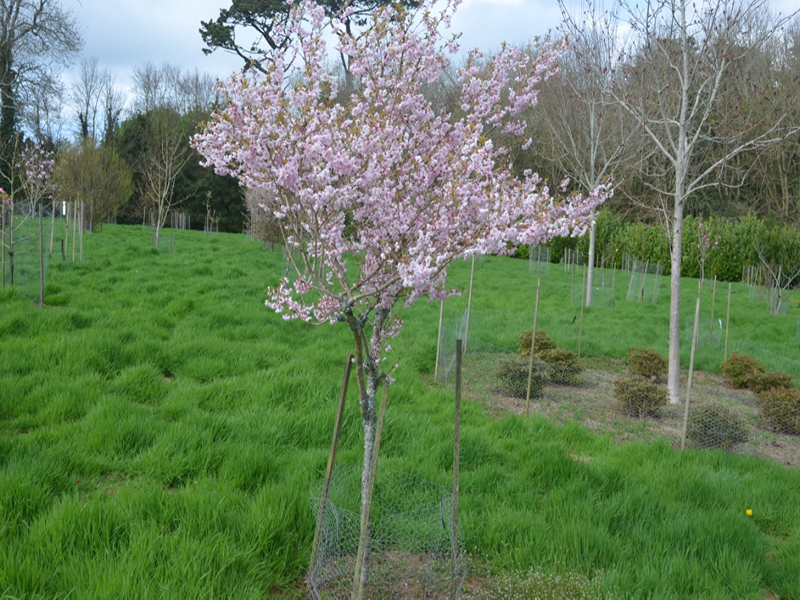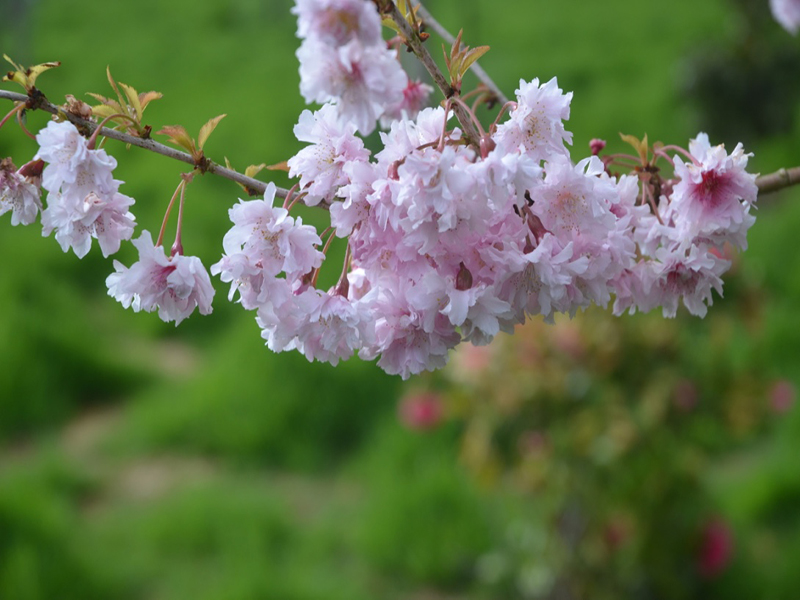| General Description | A dense, rounded large shrub or small tree with soft double pink flowers opening over a long period in late April to early May. |
| Shape | A smooth, symmetrical rounded canopy with dense branching. |
| Landscape | A specimen plant or in small groupings. |
| Propagation | By stem cuttings taken in May-July. |
| Cultivation | ‘Hally Jolivette’ Cherry should be grown in full sun on well-drained soil. Grow fine in clay soil which is not too compacted. |
| Pests | Potential diseases include leaf spot, die back, leaf curl, powdery mildew, root rot and fireblight. Potential insects include spider mites, aphids, scale, borers, leafhoppers, caterpillars, tent caterpillars and Japanese beetles. |
| Notable Specimens | Caerhays Castle, Goran, Cornwall, United Kingdom. |
| Bark/Stem Description | A dense multi-stemmed deciduous tree with a smooth dark red bark. |
| Leaf Description | Obovate, 5 - 7.5 cm long, serrate margins, dark green leaves which emerge coppery-bronze in spring. The pointy leaves turn an outstanding coppery-bronze in the autumn. |
| Flower Description | Double, 3 cm in diameter, light pink flowers opening from pink buds before the leaves with an extended period of bloom. |
| Texture Description | The foliage lends a fine texture to the landscape. |

